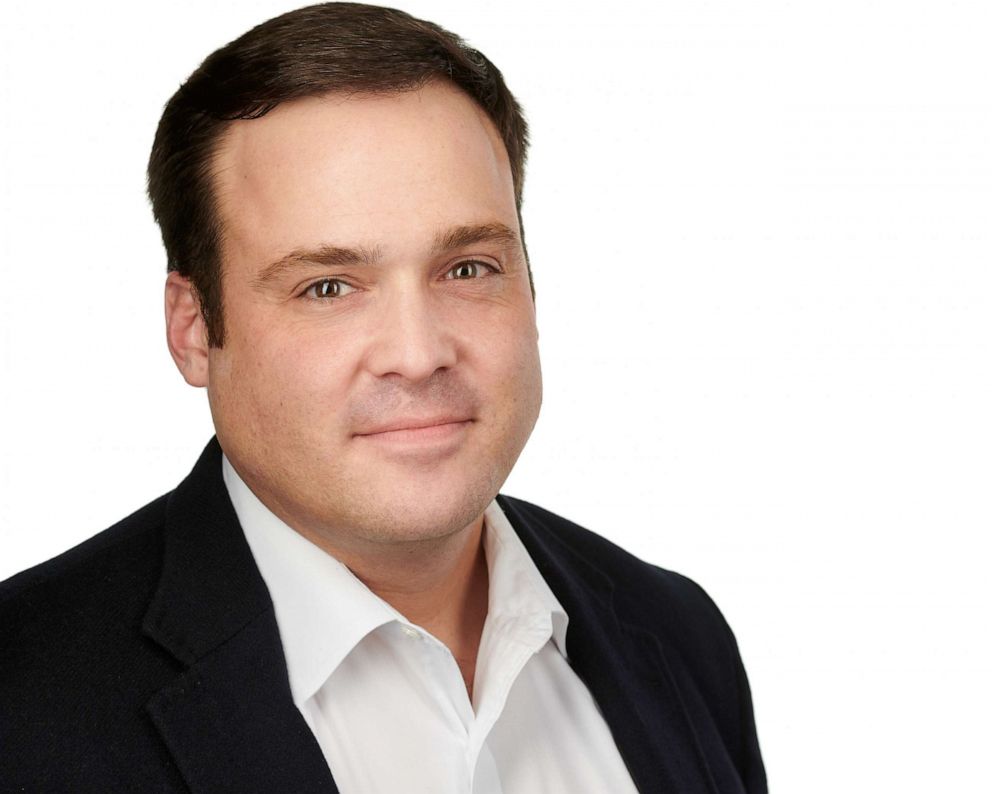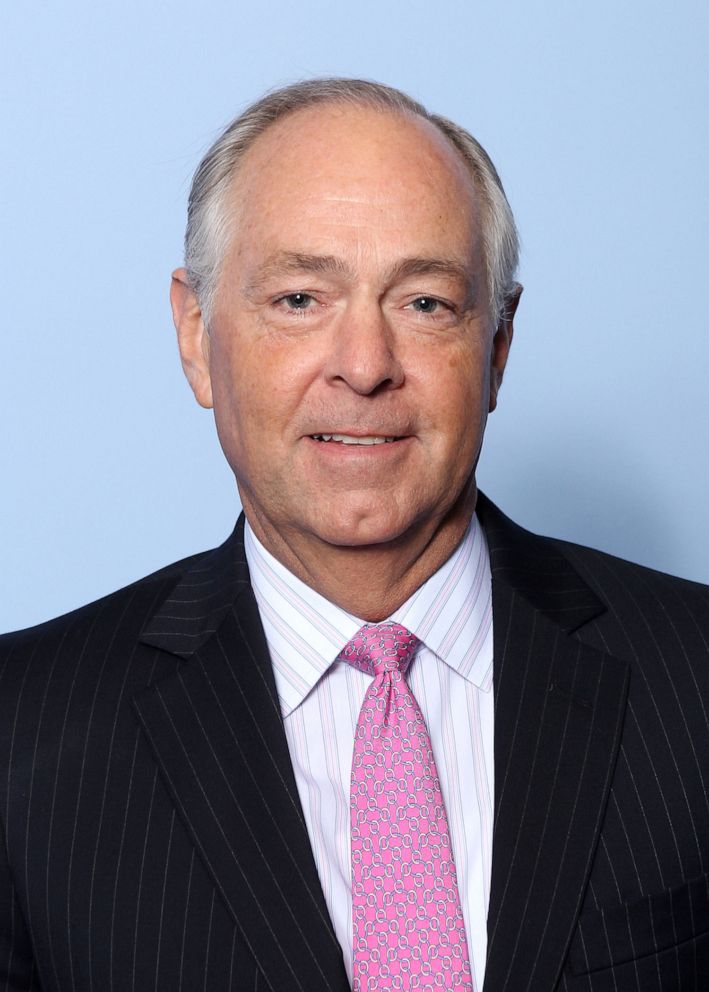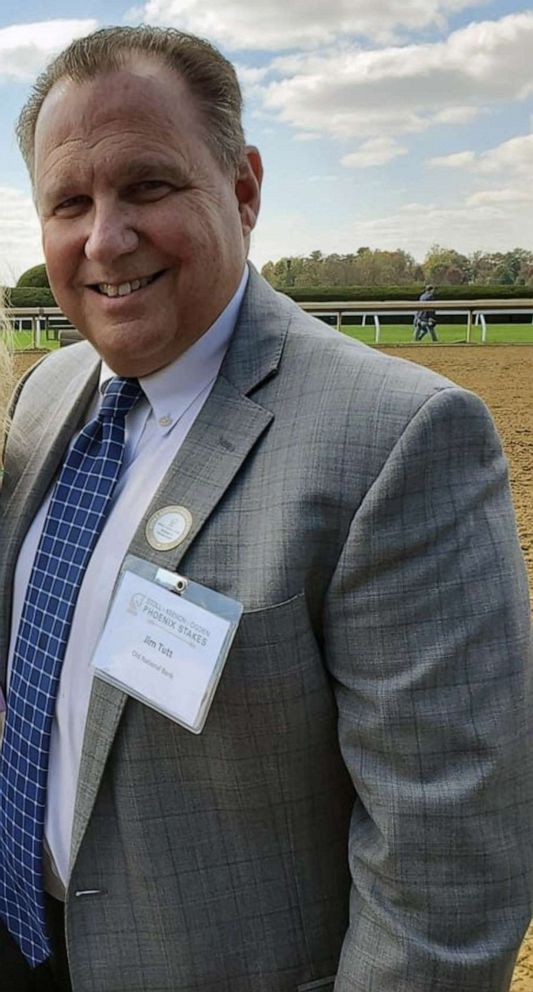
(LOUISVILLE, Ky.) — Five people were killed and eight others were injured in a mass shooting at a bank in Kentucky’s largest city on Monday morning, according to police.
The suspect was killed by officers responding to the scene at Old National Bank in Louisville, police said.
Here’s how the news developed. All times Eastern:
Apr 11, 10:06 PM EDT
Suspect’s family issues statement
The family of the suspected gunman, 25-year-old Connor Sturgeon, issued a statement Monday night expressing their sorrow, also saying “there were never any warning signs or indications he was capable of this shocking act.”
“No words can express our sorrow, anguish, and horror at the unthinkable harm our son Connor inflicted on innocent people, their families, and the entire Louisville community,” the Sturgeon family said. “We mourn their loss and that of our son, Connor. We pray for everyone traumatized by his senseless acts of violence and are deeply grateful for the bravery and heroism of the Louisville Metropolitan Police Department.”
“While Connor, like many of his contemporaries, had mental health challenges which we, as a family, were actively addressing, there were never any warning signs or indications he was capable of this shocking act,” the family said. “While we have many unanswered questions, we will continue to cooperate fully with law enforcement officials and do all we can to aid everyone in understanding why and how this happened.”
Apr 11, 5:52 PM EDT
Timeline of police response
Louisville Deputy Chief Paul Humphrey provided a timeline of the police response to Monday’s shooting while sharing body camera footage from the responding officers:
–8:38 a.m.: Officers dispatched.
–8:41 a.m.: Officers Nickolas Wilt and Cory Galloway pull up to an entrance to the bank. Gunshots are immediately fired in their direction, forcing them to back up the car.
–8:42 a.m.: They exit the vehicle.
–8:44 a.m.: Wilt is struck and officers return fire. When Wilt is struck, Galloway is heard yelling, “He’s down! Get the officer!”
–8:45 a.m.: After a short barrage of gunfire, officers make entry to the bank and confirm the suspect is down.
-ABC News’ Will McDuffie
Apr 11, 5:32 PM EDT
Body camera footage released
Louisville police have released body camera footage from Monday’s mass shooting.
The footage shows the interaction between the shooter and responding officers, including Nickolas Wilt, who was shot and remains in critical condition.
“You will see he never hesitates,” Deputy Chief Paul Humphrey said of Wilt during a press briefing on the footage. “This young man went back in to the line of fire.”
Humphrey said the suspect “lied in wait” for officers to respond to the bank shooting.
The officers could not see inside the building on their approach, and the footage conveys the “tension” of the scene, Humphrey said.
Officers and EMS treated victims at the scene of the shooting. The actions of first responders “absolutely saved lives,” Humphrey said.
Louisville Mayor Craig Greenberg said authorities plan to release 911 audio of the incident within the next 24 hours.
“We know there are still a lot of unanswered questions,” Greenberg said at the briefing. “We will continue to provide information as soon as it is available.”
Apr 11, 3:50 PM EDT
1 victim remains in critical condition
Of the eight people injured in Monday’s mass shooting, three remain at the University of Louisville Hospital.
One of those patients, 26-year-old police officer Nickolas Wilt, is still in critical condition, hospital officials said, and the other two patients are stable and in fair condition.
Wilt was shot in the head while running toward the gunfire, according to police. Wilt just graduated from the police academy on March 31.
Wilt was on his fourth shift ever when he rushed the shooter, with his field training officer beside him, said Jackie Gwinn-Villaorel, Louisville’s interim police chief.
The training officer, Cory Galloway, shot and killed the suspect, authorities said, while being grazed by a bullet.
Apr 11, 12:23 PM EDT
Suspect bought AR-15 legally last week
The suspected shooter, 25-year-old Connor Sturgeon, bought the AR-15 legally on April 4 in Louisville, Jackie Gwinn-Villaroel, interim chief of the Louisville Metro Police Department, said at a news conference Tuesday.
Sturgeon was a current employee of the bank where the “targeted” shooting unfolded, she said.
Police said body camera footage from officers who responded to the shooting will be released Tuesday afternoon.
A vigil will be held Wednesday at 5 p.m. at the Muhammad Ali Center, Louisville Mayor Craig Greenberg said.
The mayor noted that, under Kentucky law, the gun used in Monday’s mass shooting will one day be auctioned off and back on the street.
He pleaded, “It’s time to change this law and let us destroy illegal guns and destroy the guns that have been used to kill our friends and kill our neighbors.”
“Five more families have lost a loved one,” the mayor said.
“This is happening in America everywhere and will keep happening until we say ‘enough’ and take meaningful action,” he said. “Doing nothing is not a strategy, is not a solution.”
The suspect left a note and “texted or called at least one person to let them know he was suicidal and contemplating harm,” Rep. Morgan McGarvey, D-Ky., said at Tuesday’s news conference.
“But we don’t have the tools on the books to deal with someone who is an imminent danger to themselves or to others,” he said.
“We can come together at the federal level, working with each other to solve this problem which is impacting all of us in a uniquely American way, and get universal background checks so people who shouldn’t have a gun can’t buy one,” McGarvey said.
“That is not a political issue, but it becomes one when Kentucky Republicans would rather ban books and pronouns, and then make Kentucky a sanctuary state for weapons,” he said.
Apr 11, 10:48 AM EDT
One victim remains in critical condition
Of the eight people injured in Monday’s mass shooting, four remain at the University of Louisville Hospital.
One of those patients, 26-year-old police officer Nickolas Wilt, is still in critical condition, hospital officials said, and the other three patients are stable and in fair condition.
Wilt was shot in the head while running toward the gunfire, according to police. Wilt just graduated from the police academy on March 31.
Apr 11, 8:08 AM EDT
Suspect was armed with AR-15, mayor says
The alleged gunman in Monday’s mass shooting at a Louisville bank was wielding an AR-15 when he was gunned down by police, according to Louisville Mayor Craig Greenberg.
Craig revealed the detail during an interview with CBS News on Tuesday morning.
Apr 11, 7:54 AM EDT
What we know about Kentucky’s gun laws
Kentucky is one of 26 U.S. states that allow for permitless carry of firearms for eligible adults.
The Bluegrass State passed a law in 2019 removing the provisions that mandated state gun owners pass a background check if they were going to conceal carry their weapon. Under the law, most adults over the age of 21 can purchase and carry a firearm and take them to most places in Kentucky without any license.
Although gun owners can still apply for a gun license, which requires background checks, they are only meant for people who need such permits when traveling out of state.
Aside from federal laws that prohibit gun purchases by people with convicted felonies, there are no Kentucky laws that prohibit gun purchases to state residents who have mental health disorders, violent misdemeanor convictions, domestic abuse-related restraining orders or anyone with substance abuse disorders.
Firearms are still prohibited in several locations in Kentucky. Schools, government buildings, courthouses, police stations and any place that serves alcohol are gun-free locations, according to state law.
Kentucky law does not have any provisions preventing firearms in several locations such as hospitals, houses of worship, sports arenas, casinos, polling places and banks. However, local business owners and public and private colleges are also allowed to prohibit firearms on their properties, but they must have adequate signage on their premises, according to state law.
Apr 10, 10:59 PM EDT
Old National Bank releases new statement
“There are no words to adequately describe the sadness and devastation that our Old National family is experiencing as we grieve the tragic loss of our team members and pray for the recovery of all those who were injured,” Old National Bank CEO Jim Ryan said in a new statement Monday night.
Ryan and other members of the Old National leadership team have been in Louisville much of the day offering support to affected individuals and their families, and they will continue to be on hand to provide support in the days ahead.
“Obviously, this is an incredibly difficult situation, and our entire focus is on making sure that everyone affected has the support and assistance they need,” Ryan said. “On behalf of everyone at Old National, I also want to acknowledge and thank Louisville law enforcement, the medical community and state and local officials for their incredible response to this tragedy. And finally, we ask you to please continue to pray for all those affected.”
Apr 10, 11:01 PM EDT
Fifth person has died, police say
A fifth person has died following Monday’s mass shooting at a Louisville bank, police said.
Louisville police identified 57-year-old Deana Eckert as the latest victim.
Apr 10, 6:35 PM EDT
Louisville mayor vows to fight gun violence
Louisville Mayor Craig Greenberg spoke with ABC News’ Trevor Ault and pledged to make reducing gun violence his top priority in office, hours after four people, including his own friend, were gunned down inside a downtown bank.
“We have to take action. Today is a day for love and support to the victims… but this is life and death, so as mayor, this will continue to be our number one priority,” Greenberg – who was a victim of a workplace attack last year, said in the interview that took place a block away the bank.
Greenberg called his emotions “raw.”
“The second I got the alert that there was an active shooter going on, of course my mind immediately went back to the workplace shooting that I survived just over a year ago,” he said. “I know many people who work in that building, so I was thinking about them and everyone that was there.”
-ABC News’ Will McDuffie
Apr 10, 5:30 PM EDT
Shooting suspect was going to be fired from job: Sources
The suspected gunman who shot and killed four people at a downtown Louisville bank had recently been notified he was going to be fired from Old National Bank, law enforcement sources told ABC News.
Connor Sturgeon had interned at Old National Bank for three years before earning a full-time job in June 2021, sources said. He had been promoted in April 2022.
There was no immediate indication why he was notified he would be terminated, according to sources.
The suspect allegedly left a note to parents and friends indicating he was going to shoot up the bank, sources said.
-ABC News’ Aaron Katersky
Apr 10, 3:50 PM EDT
Suspect worked at the bank, was armed with rifle
The suspected shooter, 23-year-old Connor Sturgeon, was armed with a rifle when he allegedly carried out a mass shooting at the Old National Bank, where he worked, according to police.
The suspect was livestreaming, police said, though officials did not elaborate.
Authorities said the suspect was killed by police.
Nine people were hospitalized, including three currently in critical condition, said Dr. Jason Smith, chief medical officer at University of Louisville Health. Three victims are in the hospital with non-life-threatening injuries and the three others have been released, Smith said.
Among the nine injured is 26-year-old police officer Nickolas Wilt, who was shot in the head, according to police. He underwent brain surgery and is in critical but stable condition, police said.
Wilt just graduated from the police academy on March 31.
The four slain victims were identified by police as Joshua Barrick, 40; Thomas Elliott, 63; Juliana Farmer, 45; and James Tutt, 64.
Louisville Mayor Craig Greenberg said Elliott was “a very good friend of mine” and of Kentucky Gov. Andy Beshear.
“This was an evil act of targeted violence,” the mayor said.
“Today, I’m hurt and I’m hurting, and I know so many people out there are, as well,” Beshear said. “We lost four children of God today, one whom is one of my closest friends. Tommy Elliott helped me build my law career, helped me become governor, gave me advice on being a good dad. … He was an incredible friend.”
The governor said of all four victims, “These are irreplaceable, amazing individuals.”
Apr 10, 2:56 PM EDT
Biden: ‘When will Republicans in Congress act?’
President Joe Biden tweeted Monday, “Once again, our nation mourns after a senseless act of gun violence.”
“Jill and I pray for the lives lost and impacted by today’s shooting. Too many Americans are paying for the price of inaction with their lives,” he wrote. “When will Republicans in Congress act to protect our communities?”
White House press secretary Karine Jean-Pierre said at Monday’s briefing, “Once again, today the president has called on Republicans in Congress to work together with Democrats to take action to ban assault weapons and high-capacity magazines, to require safe storage of firearms, to require background checks for all gun sales, to eliminate gun manufacturers’ immunity from liability.”
“These are common sense actions we can ask for and should be getting right now,” she said.
“We need to act and we need Republicans to show some courage,” she said.
Apr 10, 1:02 PM EDT
2 officers among the injured, 1 in critical condition
Two officers and seven civilians were injured in the Louisville shooting, according to the University of Louisville Hospital.
One of those officers is in critical condition, according to police.
At least three patients have already been discharged, according to the hospital.
Apr 10, 11:27 AM EDT
McConnell ‘devastated’ by news of Louisville shooting
Republican leader and Kentucky Sen. Mitch McConnell, who lives in Louisville, tweeted that he’s “devastated” by the news of Monday morning’s mass shooting.
“We send our prayers to the victims, their families, and the city of Louisville as we await more information,” McConnell tweeted.
His fellow Kentucky senator, Rand Paul, tweeted, “Our hearts break for the families of those lost.”
Apr 10, 11:21 AM EDT
Officers exchanged gunfire with suspect who died at scene
Officers arrived within three minutes of being dispatched and found the suspect still firing, Louisville police said.
Officers exchanged gunfire with the suspect who died at the scene, police said. It’s not yet clear if the suspect’s wounds were self-inflicted, police said.
Four victims were killed and eight people are injured, police said.
At least two officers were shot during the exchange of gunfire, police said, including one who is undergoing surgery.
It appears the suspect was a previous or current employee, police said.
“This is awful. I have a very close friend that didn’t make it today. And I have another close friend who didn’t, either, and one who is at the hospital that I hope is gonna make it through,” Kentucky Gov. Andy Beshear said at a news conference.
Apr 10, 10:53 AM EDT
At least 15 mass shootings so far this month
There have been at least 15 mass shootings in the U.S. in the first 10 days of April, including Monday morning’s shooting in Louisville, according to the Gun Violence Archive.
So far this year, the nation has seen at least 146 mass shootings.
The Gun Violence Archive defines a mass shooting as at least four people shot, not including the suspect.
“It feels like every day in this country we are totally consumed by yet another mass shooting. Nowhere else in the developed world do people wake up to this preventable horror every single morning,” Kris Brown, president of the Brady Center to Prevent Gun Violence, said in a statement Monday. “Whether it’s a bank, a school, a supermarket, or a church, Americans no longer feel safe in their communities. And Americans are increasingly tired of living in fear of being a victim of a mass shooting.”
“It does not have to be this way,” Brown said. “But until the gun industry no longer has a vice grip on our elected officials, this will continue to be our daily reality.”
Apr 10, 10:32 AM EDT
Shooting unfolded in bank conference room
The gunman opened fire in the bank’s first-floor conference room at about 8:30 a.m. local time, according to officials.
Eyewitnesses said the shooter appeared to have been armed with a long gun.
“He just started shooting,” Troy Haste told ABC Louisville affiliate WHAS-TV. “Whoever was next to me got shot. Blood is on me from it.”
Police said the suspect is dead.
A responding police officer was shot in the head, sources told ABC News. The officer’s condition is unknown.
According to preliminary information, this shooting is not believed to have been terror-related, sources told ABC News.
Apr 10, 10:19 AM EDT
Suspected shooter neutralized
Louisville police tweeted that the “suspected shooter has been neutralized,” adding, “There is no longer an active aggressor threat.”
There is no longer an active aggressor threat. The suspected shooter has been neutralized.
— LMPD (@LMPD) April 10, 2023
Apr 10, 10:05 AM EDT
Residents urged to avoid area
Louisville Mayor Craig Greenberg tweeted that residents should avoid the area around Slugger Field until further notice.
There is an active police situation downtown. Please avoid the area around Slugger Field until further notice. We will provide information as soon as possible.
— Mayor Craig Greenberg (@LouisvilleMayor) April 10, 2023
Kentucky Gov. Andy Beshear said he is heading to the scene.
“Please pray for all of the families impacted and for the city of Louisville,” he tweeted.
FBI and ATF agents are assisting with the incident.
Copyright © 2023, ABC Audio. All rights reserved.














